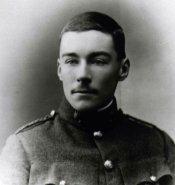Philip Neame
| Sir Philip Neame | |
|---|---|
 |
|
| Born |
12 December 1888 Faversham, Kent, England |
| Died | 28 April 1978 (aged 89) Selling, Kent, England |
| Allegiance | United Kingdom/British Empire |
| Service/branch | British Army |
| Years of service | 1908–1947 |
| Rank | Lieutenant General |
| Unit | Royal Engineers |
| Commands held |
Royal Military Academy, Woolwich 4th Indian Infantry Division British Forces in Palestine and Trans-Jordan |
| Battles/wars |
First World War Second World War |
| Awards |
Victoria Cross Knight Commander of the Order of the British Empire Companion of the Order of the Bath Distinguished Service Order Knight of the Order of St John Mentioned in dispatches Légion d'honneur (France) Croix de guerre (France) Croix de guerre (Belgium) Order of the White Lion (Czechoslovakia) |
| Other work | Olympic gold medalist Lieutenant Governor of Guernsey |
| Medal record | ||
|---|---|---|
| Men's shooting | ||
| Representing |
||
| Olympic Games | ||
| 1924 Paris | Team running deer, double shots |
|
Lieutenant General Sir Philip Neame VC, KBE, CB, DSO, KStJ (12 December 1888 – 28 April 1978) was a senior British Army officer and a recipient of the Victoria Cross, the highest award for gallantry in the face of the enemy that can be awarded to British and Commonwealth forces, and the winner of an Olympic Gold medal; he is the only person to achieve both distinctions.
Philip Neame was born on 12 December 1888 in Faversham in the County of Kent, the son of Kathleen Neame (née Stunt) and Frederick Neame (b. 1847). He received his education at Cheltenham College, and the British Army's Royal Military Academy at Woolwich, Kent.
On graduating from the Royal Military Academy Neame received a commission as a second lieutenant into the Royal Engineers in July 1908. He was promoted to lieutenant in August 1910, whilst serving with the 15th Field Company.
The declaration of war in August 1914 found Neame with the 15th Field Company in the Gibraltar Garrison. The company joined the British Expeditionary Force (BEF) on the Western Front in October 1914.
During the First Battle of Ypres in October 1914, Neame experienced first hand in the trenches the inferiority of the British issue hand-grenades compared to their German equivalent, and set about creating an alternative, the sappers improvising rudimentary but effective hand grenades made from empty jam tins filled with scrap metal, with the charge being created using gun-cotton, and a cord-fuse projecting from the end of the tin, requiring ignition by flame.
...
Wikipedia
